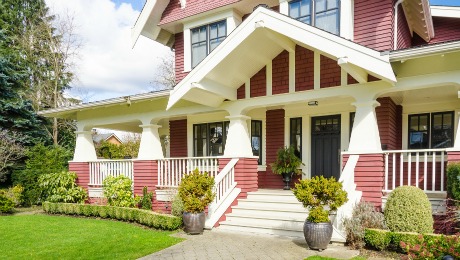Proportion of Underwater Homes Drops to 10 Percent

Before moving on to the positive headline, it pays to reflect on its significance. Consider a September 2014 article from Paul Ausick that was run online at the site 24/7 Wall Street. By the close of 2014’s second fiscal quarter, 5.3 million of the nation’s mortgaged properties showed negative equity. There are around 49.5 million mortgaged properties in the U.S. and negative equity occurs when the borrower owes more on the property than it is worth.
Although 5.3 million certainly sounds like a dangerous number of underwater mortgages, it is a great improvement from the 12.7 percent that was recorded in the first quarter of 2014. As the situation improves, economists and housing market analysts are looking to 2015 as a year for an active period for U.S. home sales. Also, breaking the surface after an underwater mortgage scenario will give millions of American homeowners the chance to get ahead through home sales, purchases, and refinancing strategies.
Now the latest report from CoreLogic, reveals that in the y-o-y analysis, borrower equity increased over the course of 2014 by $800 billion. The number of residential homes with a negative equity mortgage fell to just around 10 percent. Compared to figures on this category from 2013 when that percentage was just over 13 percent, makes this significantly good news!
The deputy chief economist for CoreLogic, Sam Khater reflected on the positive development this way, “Forecasted house price appreciation of about five percent over the next year suggests that negative equity should be at about 8 percent a year from now, still above average, but approaching the pre-crisis level.” Khater also acknowledged that the negative equity share is dominated by several states, namely, Florida, Georgia, Michigan and Nevada.
Among the 44.6 million residential homes experiencing positive equity, around 19 percent or 9.4 million, show less than 20 percent equity. That is also known as the state of being “under-equitied.” Furthermore, 1.3 million of that group has less than 5 percent equity, which is referred to as “near-negative” equity. This is viewed as a concern because such borrowers are at risk should home prices fall or if they are faced with financial challenges such as job loss or emergency medical bills.
That point is why market watchers and economists monitor home prices so carefully! As Khater noted, “In contrast, if home prices rose by as little as 5 percent, an additional 1 million homeowners now in negative equity would regain equity.” That, folks is how the nation’s real estate market drives and impacts the U.S. economy.
CoreLogic’s CEO and president, Anand Nalthambi made the observation that, “Better fundamentals supporting homeownership in the face of higher rents should attract more first-time home buyers to the market this year and next.”
Nallathambi also explained that as the problems associated with underwater mortgage cases dissipate, the housing market as a whole should have no problem moving strongly forward.
In addition to the states mentioned above, there are five states that account for 33.1 percent of the nation’s negative equity cases. The breakdown is: Nevada (25.4%), Florida (23.8%), Arizona (19%), Rhode Island (14.8%), and Illinois (14.1%).
So which states are on top when it comes to home equity? According to CoreLogic it’s Texas (97.4%), Alaska (97.1%), Montana (97.1%), Hawaii (96.4%) and North Dakota (96.1%).
Subscribe To Our Newsletter
Sign up with your email address to receive news and updates.